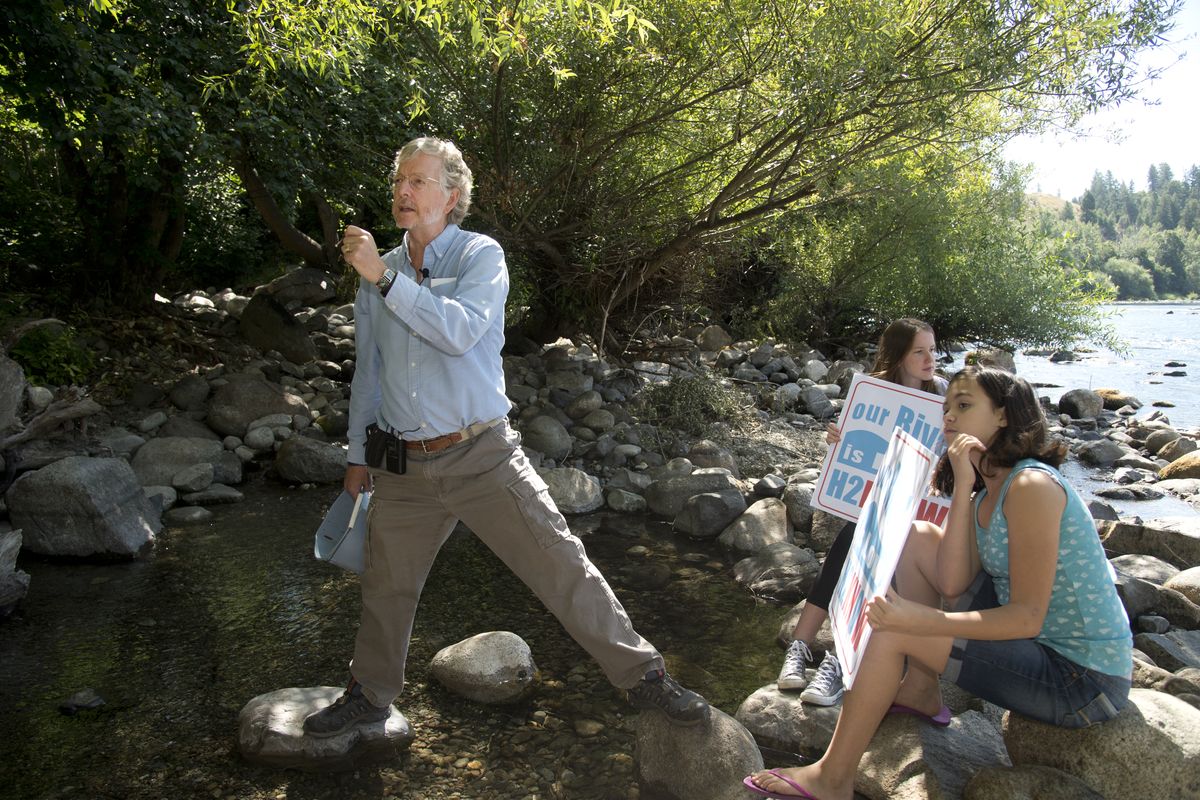Conservationists ask Spokane-area water users to conserve, protect river

As a drought measure, John Osborn has cut his daily shower to two minutes.
He’s installed low-flush toilets in his home and replaced his lawn with low-water landscaping.
Now, he and his wife are considering tearing out their vegetable garden, which isn’t performing well in the heat, to further curtail their water use.
There’s no water shortage in Spokane, which gets its water from the massive Spokane Valley-Rathdrum Prairie Aquifer, the source of drinking water for more than 500,000 of the region’s residents. But each gallon of water drawn from the aquifer reduces the recharge into the Spokane River, which is running near historic lows this year.
“When we pump from the aquifer, we’re robbing from the river,” said Osborn, a physician and local environmental activist. “We’ve been sacrificing the river to have our green lawns.”
Conservation groups are asking local residents to think about the river when they water and shower this summer. The conservation message is on seven billboards that went up in Spokane this week.
“The river is about as low and hot as it’s been for a century,” said John Roskelley, a former Spokane County commissioner who spoke at Wednesday’s campaign kickoff. “There wasn’t enough snow in the mountains and there wasn’t enough rain in the spring.”
To emphasize the connection between the aquifer and the river, the news conference was held under the T.J. Meenach Bridge at a site known as Aquifer Springs. Cold water seeps out of the hillside and flows down into the river. It’s one of hundreds of sites where the aquifer recharges the river.
Pumping water from the aquifer for human use reduces flows in the Spokane River by about 225 cubic feet of water per second, according to the Washington Department of Ecology’s estimates. This summer, the impact of the withdrawals could be more severe.
The drought, coupled with a string of 90-plus-degree days in June, has led to record levels of pumping by local municipalities.
The city of Coeur d’Alene set an all-time record in June, pulling 734 million gallons of water from the aquifer. Water consumption was 50 percent higher than the 10-year average for the month, said Jim Markley, Coeur d’Alene’s water superintendent.
Coeur d’Alene’s previous monthly record for pumping was 567 million gallons of water, set in July 2009.
The city of Spokane pumped 3.3 billion gallons from the aquifer in June, a 14 percent increase compared with June 2014.
“We were pumping at levels we normally see in late July or August,” said Marlene Feist, a spokeswoman for the city of Spokane.
Feist said the city is working to curtail its water use, with plans to improve irrigation systems at city parks and golf courses, and reduce leaks from water mains.
The city’s “Slow the Flow” campaign also encourages residents to save water, Feist said. It includes free audits of sprinkler systems and a tiered pricing system that charges more per gallon as water use increases, she said.
Common mergansers foraged at the edge of the Spokane River during Wednesday’s news conference. The water looked inviting, but exposed rocks revealed how low the river was.
At the Monroe Street Bridge, the river was flowing at 717 cubic feet per second Wednesday, about 38 percent of normal for this time of year.
Tina Wynecoop’s lawn is brown this summer. She stopped watering to do her part for the river.
More people need to make the connection between turning on the hose or faucet and the health of the river, she said.
“We’ve come a long way in cleanup and protection of the river,” said Wynecoop, a Spokane resident and environmental activist. “This year, we need to think about its needs over our own.”